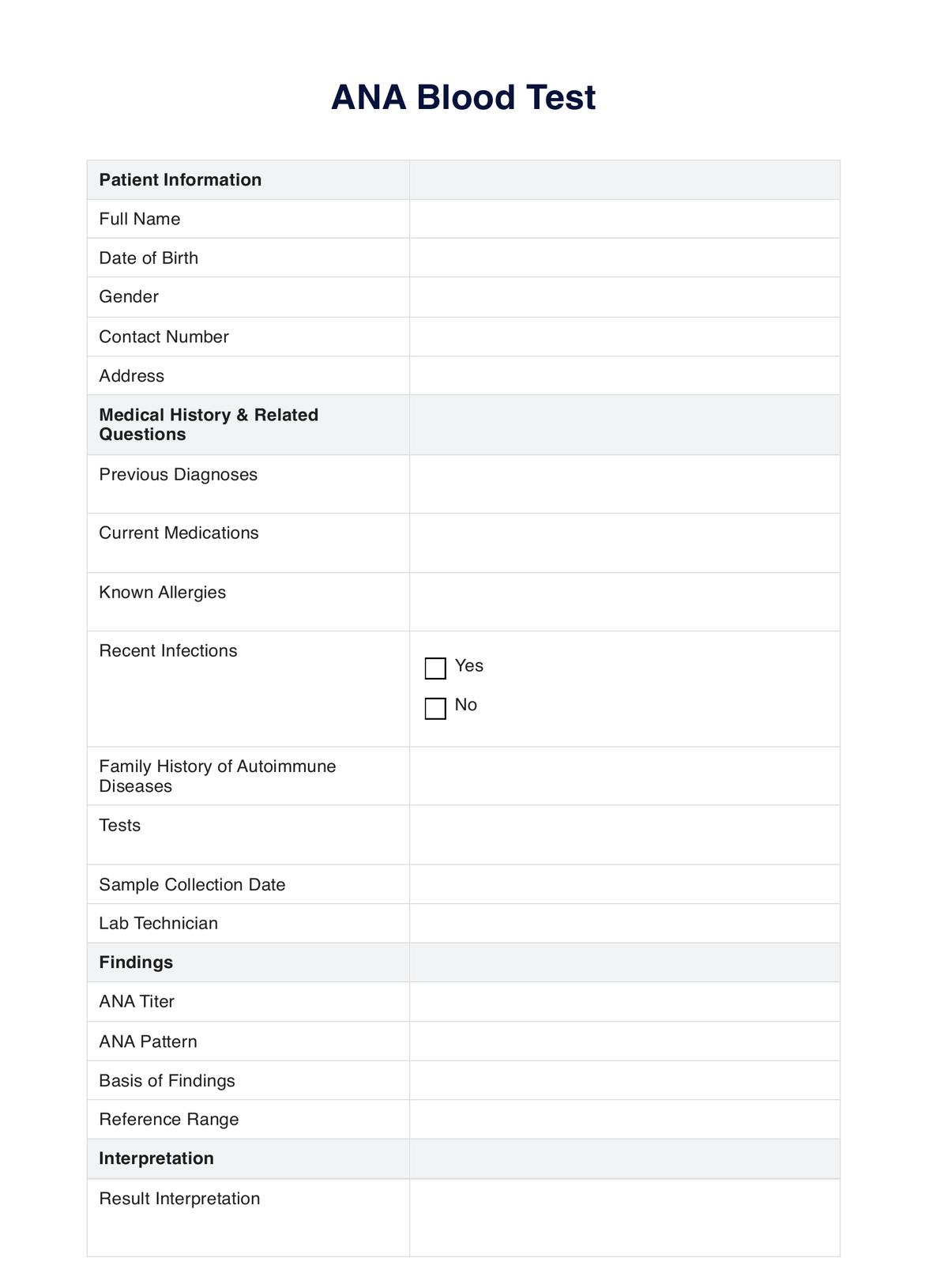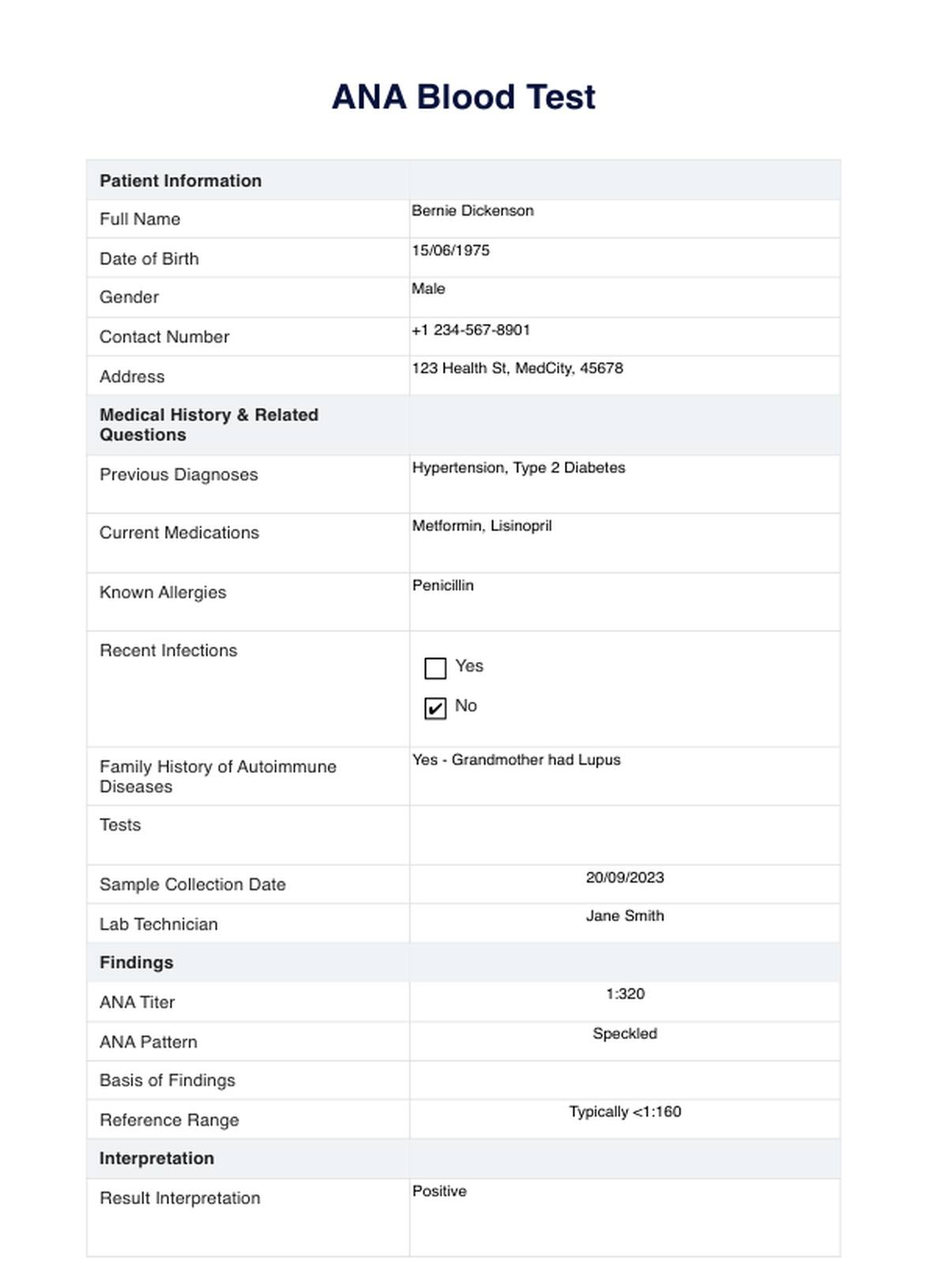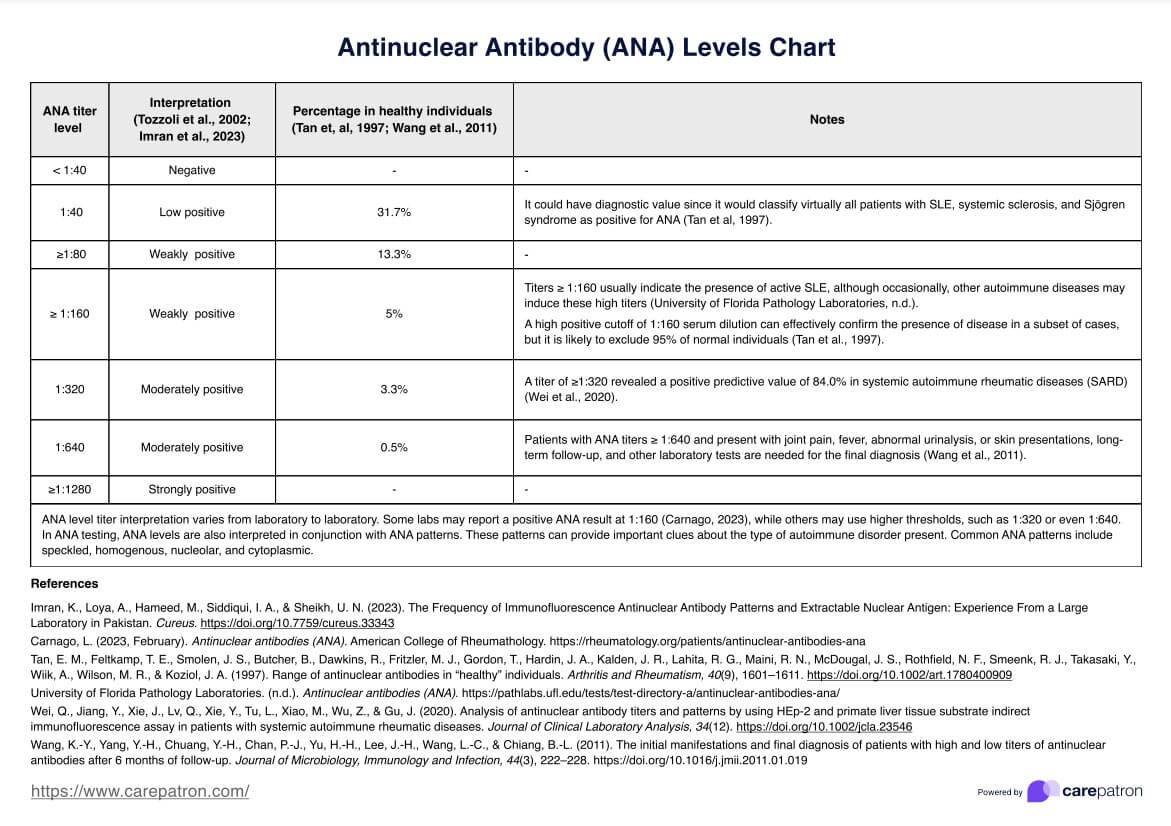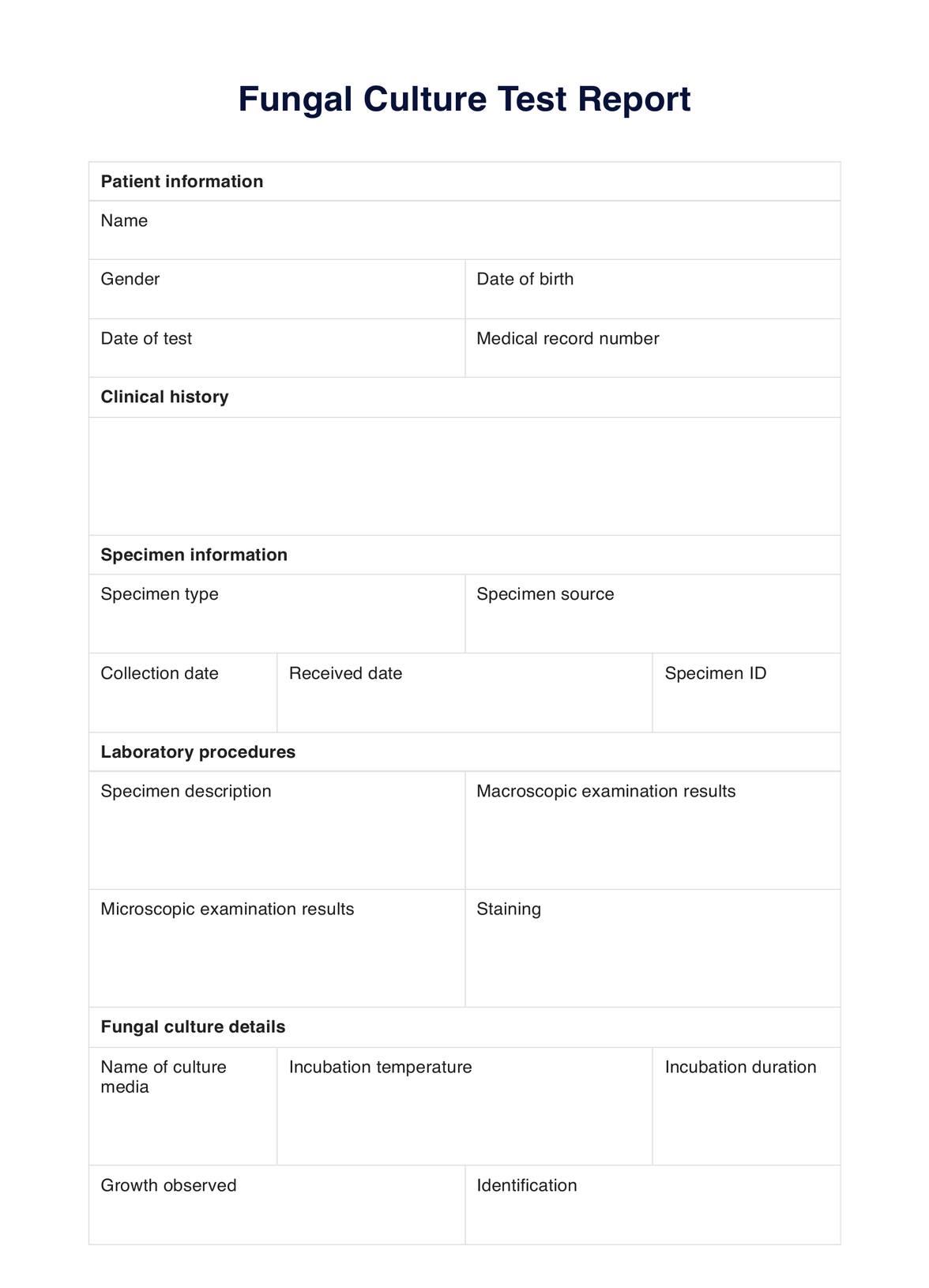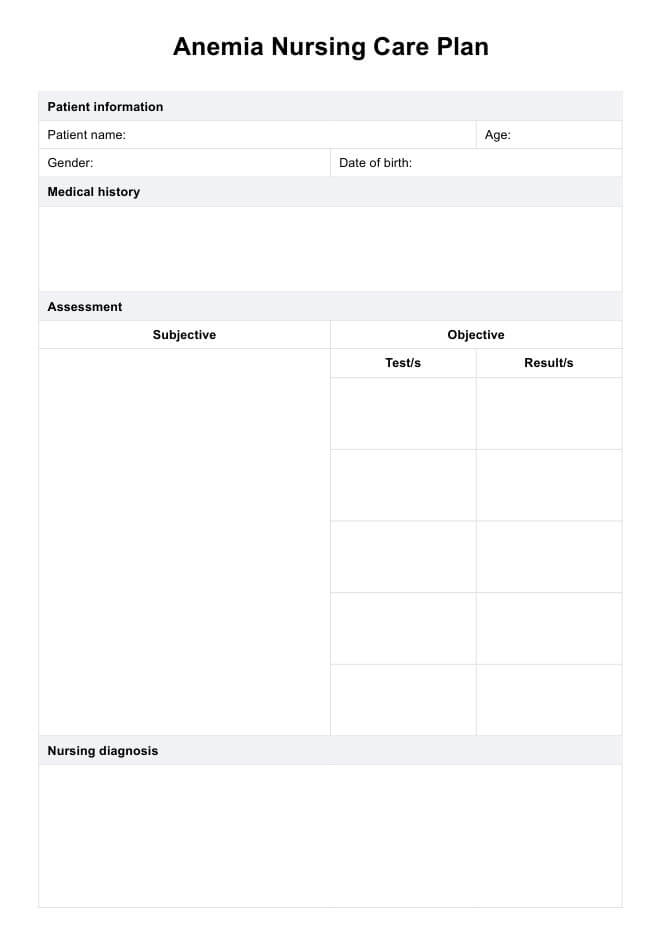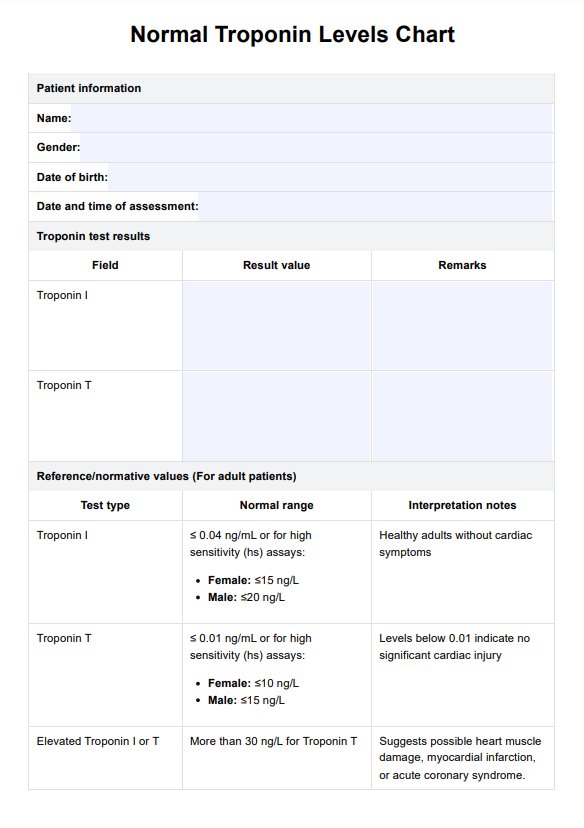ANA Blood Test
Discover the significance of the ANA Blood Test with Carepatron. Elevate your healthcare practice with our advanced patient portal and telehealth services.


What is an ANA Blood Test?
The ANA Blood Test, or Antinuclear Antibody Test, is a pivotal tool in medicine, especially when diagnosing autoimmune disorders. At its core, this test seeks out the presence of antinuclear antibodies in the blood. Why is this significant? Well, these antibodies, when found in unusually high numbers, often indicate that the body's immune system is attacking its cells, mistaking them for invaders. This self-attack is a hallmark of autoimmune diseases like lupus, rheumatoid arthritis, and many others.
Now, while these antibodies can be a red flag, it's essential to understand that they can also be found in individuals without any autoimmune condition. This is where the expertise of healthcare professionals comes into play, interpreting the results in the context of other clinical findings and patient symptoms.
For healthcare professionals looking to streamline their diagnostic processes, the is an invaluable asset. It not only aids in organizing and interpreting ANA Blood Test results but also ensures that patient data is handled with the utmost care and precision. In a world where accuracy and efficiency are paramount, having a reliable platform like Carepatron can make all the difference.
ANA Blood Test Template
ANA Blood Test Example
How to use the ANA Blood Test
The ANA Blood Test is a crucial tool for diagnosing autoimmune disorders. To ensure accurate results and a smooth process, follow these steps:
Step 1: Understand the Patient's Medical History
- Before administering the test, gather comprehensive information about the patient's medical history, focusing on any previous diagnoses, current medications, known allergies, and family history of autoimmune diseases.
Step 2: Prepare the Patient
- Inform the patient about the purpose and procedure of the test. Ensure they are relaxed and comfortable.
- Ask the patient to fast for 8-12 hours if necessary, depending on the lab's requirements.
Step 3: Collect the Blood Sample
- Using a sterile needle, draw a blood sample from the patient's arm.
- Ensure the sample is correctly labeled with the patient's details.
Step 4: Send to the Laboratory
- Safely package the blood sample and send it to a certified laboratory for analysis.
Step 5: Interpret the Results
- Once the results are received, compare the findings with the reference range to determine if they are normal or indicative of an autoimmune condition.
- Consult with other healthcare professionals if needed, and plan the next steps for patient care based on the results.
The ANA Blood Test is a valuable diagnostic tool, but its effectiveness lies in the correct administration and interpretation. By following the steps outlined above, healthcare professionals can ensure they provide the best care to their patients.
When Would You Use This Form?
The ANA Blood Test is a pivotal diagnostic tool in autoimmune disorders. But when exactly is the right time for healthcare professionals to utilize this resource? Let's delve into the scenarios:
- Suspected Autoimmune Disorders: If a patient presents symptoms consistent with autoimmune diseases such as lupus, rheumatoid arthritis, or scleroderma, the ANA Blood Test can be instrumental in confirming or ruling out these conditions.
- Unexplained Fatigue or Joint Pain: While these symptoms can be attributed to various causes, they are also common in autoimmune diseases. An ANA test can help pinpoint the underlying issue.
- Family History: If a patient has a family history of autoimmune disorders, it's prudent to conduct an ANA test, especially if they show related symptoms.
- Monitoring Treatment Efficacy: For patients already diagnosed with an autoimmune condition and undergoing treatment, periodic ANA tests can help gauge the effectiveness of the treatment and adjust dosages or medications as necessary.
- Comprehensive Health Check-ups: For patients seeking a thorough health evaluation, especially those in high-risk groups, including the ANA test can provide a more holistic view of their health.
The ANA Blood Test form is not just a mere document but a crucial instrument in a healthcare professional's toolkit. Its timely and appropriate use can lead to early diagnosis, effective treatment, and better patient outcomes.
What do the Results Mean?
Understanding the results of the ANA Blood Test is crucial for determining the next steps in patient care. Let's break down the common findings:
- Negative Result: A negative test result means no autoantibodies were detected in the blood. While this is generally a sign that the patient doesn't have an autoimmune disorder, it's essential to consider the complete clinical picture, as some patients with autoimmune diseases might still test negative.
- Positive Result: A positive result indicates the presence of autoantibodies. However, it doesn't necessarily mean the patient has an autoimmune disease. Some healthy individuals, especially older adults, might have a positive ANA test without any autoimmune condition. The titer and pattern of the ANA can provide more specific information.
- Titer and Pattern: The titer indicates the dilution at which autoantibodies are still detectable. A higher titer suggests a more significant presence of autoantibodies. The pattern, on the other hand, can hint at specific autoimmune diseases. For instance, a speckled pattern might be associated with lupus or scleroderma.
While the ANA Blood Test provides valuable insights, it's just one piece of the puzzle. A comprehensive evaluation, considering other tests, clinical symptoms, and patient history, is vital for an accurate diagnosis.

Research & Evidence
The ANA (Antinuclear Antibody) Blood Test is a pivotal diagnostic tool in autoimmune disorders. Its significance is underscored by a rich history of research and evidence that supports its use.
- Stomatocytes and Macrothrombocytes: Clues to a Rare Genetic Diagnosis: This study, authored by Junge Zhang et al., delves into the intricacies of phytosterolemia, a condition that results from increased intestinal absorption of plant sterols. The research emphasizes the importance of blood tests in diagnosing rare genetic diseases and the potential misdiagnoses that can occur without such tests. Read more.
- Primary Hyperparathyroidism in a Post-total Thyroidectomy Patient: An Unexpected Diagnosis: Authored by Ana F. Batista and colleagues, this research presents a case of a patient with hypercalcemia post-total thyroidectomy. The study underscores the importance of blood tests in diagnosing and differentiating between various medical conditions, especially when symptoms overlap. Read the full study.
- The First and Second Types of Diabetes Mellitus, Autoimmune and Non-autoimmune Thyroiditis Differential Diagnosis: This research, conducted by D. I. Kozlova and team, explores the potential of using a diagnostic index based on blood plasma indicators to differentiate between autoimmune and non-autoimmune thyroiditis. The study emphasizes the importance of blood tests, such as the ANA test, in making accurate diagnoses. Find out more.
- Diagnosing Rheumatoid Arthritis Disease Using Fuzzy Expert System and Machine Learning Techniques: In this study by Fatih Tarakci et al., the researchers explore the potential of using machine learning techniques and fuzzy expert systems in diagnosing rheumatoid arthritis. The research underscores the significance of blood tests, including the ANA test, in modern diagnostic methods. Read the research.
The studies mentioned above, and many others in the scientific community, highlight the importance and credibility of the ANA Blood Test in diagnosing and understanding autoimmune disorders.
References
- Zhang, J., Zhou, Y., McLinden, A. P., Zhao, J., & Liu, J. (2023). Stomatocytes and macrothrombocytes: Clues to a rare genetic diagnosis. Link.
- Batista, A. F., Fontaínhas, S., & Pereira, S. (2023). Primary Hyperparathyroidism in a Post-total Thyroidectomy Patient: An Unexpected Diagnosis. Link.
- Kozlova, D. I., Khizha, V., Anosova, L. V., Korolkova, A. A., Benevolenskaya, S., Vasilev, D. S., ... & Ballyzek, M. (2022). The first and the second types of diabetes mellitus, autoimmune and non-autoimmune thyroiditis differential diagnosis possibility using the calculated index based on plasma butyrylcholinesterase isoforms activity. Link.
- Tarakci, F., Özkan, I. A., Yılmaz, S., & Tezcan, D. (2022). Diagnosing rheumatoid arthritis disease using fuzzy expert system and machine learning techniques. Link.
Commonly asked questions
The ANA Blood Test is primarily used to detect autoimmune disorders, especially systemic lupus erythematosus and other connective tissue diseases.
Carepatron's telehealth platform allows for real-time consultations, enabling healthcare professionals to discuss test results and provide interpretations to patients remotely, ensuring timely and efficient care.
Absolutely! Carepatron's online patient portal prioritizes patient data security, employing advanced encryption methods to safeguard all information.


